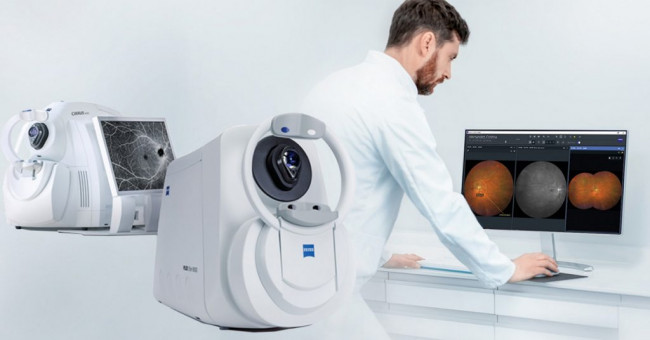Braces for front teeth are becoming an increasingly popular way for adults to improve their smile and feel more confident. Whether you have always had crooked front teeth or your teeth have shifted over time, braces can help you get the smile of your dreams. But with so many different types of braces available, it can be confusing to decide which is right for your needs. We’ll break down everything you need to know about braces for front teeth, from types of braces to what you should expect during treatment.

Why Do People Wear Braces?
The most common reason that people wear braces is to improve the alignment of their teeth. Crooked or misaligned teeth can cause a number of problems, including difficulty chewing, an increased risk of tooth decay and gum disease, and an unpleasant appearance. Braces can also help to close gaps between teeth.
In some cases, braces may be recommended for functional reasons, such as to correct a bite problem. In other cases, they may be worn purely for cosmetic reasons.
If you are considering braces for yourself or your child, it is important to consult with an orthodontist to discuss all of the options and determine which type of braces would be best suited to your individual needs.
Different Types of Braces
The two main types of braces are metal braces and clear braces. Metal braces are the most common type of braces. Clear braces are made of ceramic or porcelain, which makes them less visible than metal braces. There are also lingual braces, which are placed on the back of your teeth so they are not visible.
Metal Braces: Metal brackets are attached to each tooth with a thin wire that runs through them. The wire is tightened over time to move the teeth into place. Metal braces usually need to be adjusted every 4-6 weeks.
Clear Braces: Clear brackets are made of ceramic or porcelain and are less visible than metal braces. Clear brackets are attached to each tooth with a thin wire that runs through them. The wire is tightened over time to move the teeth into place. Clear braces usually need to be adjusted every 4-6 weeks.
Lingual Braces: Lingual braces are placed on the back side of your teeth so they are not visible when you smile or talk. Lingual brackets are attached to each tooth with a thin wire that runs through them. The wire is tightened over time to move the teeth into place. Lingual braces usually need to be adjusted every 4-6 weeks.
Invisalign: Invisalign is a type of clear aligner that is used to straighten teeth. It consists of a series of custom-made, removable trays that fit over the teeth. The trays are changed every two weeks to gradually move the teeth into place.
Process of Getting Braces
The process of getting braces for front teeth is not as complicated as you may think. First, you will need to consult with an orthodontist to see if braces are the right treatment for your particular case. If so, the orthodontist will take X-rays and impressions of your teeth in order to create a custom treatment plan.
Next, you will need to schedule an appointment for the placement of your braces. During this appointment, the orthodontist will attach brackets to your teeth and then connect them with wires. Once the braces are in place, you will need to return for regular adjustments in order to keep them tight and effective.
The entire process of getting braces for front teeth usually takes several months from start to finish. However, the results are worth it – you will have straighter, healthier teeth that you can be proud of!
How Long Do You Wear Braces For?
The average person will wear braces for about two years. However, this varies depending on the severity of the individual’s case. Some people may only need to wear them for a few months, while others may need to wear them for three years or more. age also plays a role in how long someone will need to wear braces. Children and teens typically have to wear them for shorter periods of time than adults because their bones are still growing and therefore respond more quickly to treatment.
It is important to follow your orthodontist’s instructions for wearing braces in order to maximize the effectiveness of the treatment.
Taking Care of Your Braces
If you have braces on your front teeth, it is important to take special care of them to ensure that they are effective and comfortable. Here are some tips for taking care of your braces:
1. Brush and floss regularly. This is especially important if you have food traps around your brackets. Use a soft toothbrush and be gentle when brushing around your brackets.
2. Avoid hard and sticky foods. Foods like candy, gum, and popcorn can damage your braces or get stuck in them. Cut these foods out of your diet or eat them in moderation.
3. Be careful with sports and other activities. Protect your mouth from impact by wearing a mouthguard when participating in contact sports. Also, be careful not to damage your braces when playing other sports or engaging in activities like chewing on ice or biting your nails.
4. See your orthodontist for regular checkups. These appointments are important to ensure that your braces are working correctly and to make any necessary adjustments.
5. Be diligent with your treatment plan. Wear any rubber bands or other appliances prescribed by your orthodontist as instructed and make sure to keep all of your appointments.
Following these tips will help ensure that your braces are effective and that you achieve the best possible results with minimal discomfort.
Are There Any Alternatives to Braces?
Yes, there are alternatives to braces for front teeth! Invisalign is one popular alternative that uses clear, removable aligners instead of metal brackets and wires. Talk to your orthodontist about whether Invisalign might be a good option for you.
Other alternatives to braces include:
• Porcelain veneers
• Plastic aligners
• Clear aligners
• Retainers
• Lingual braces (braces that go on the back of your teeth)
• Palatal expanders (appliances used to widen the upper jaw)














